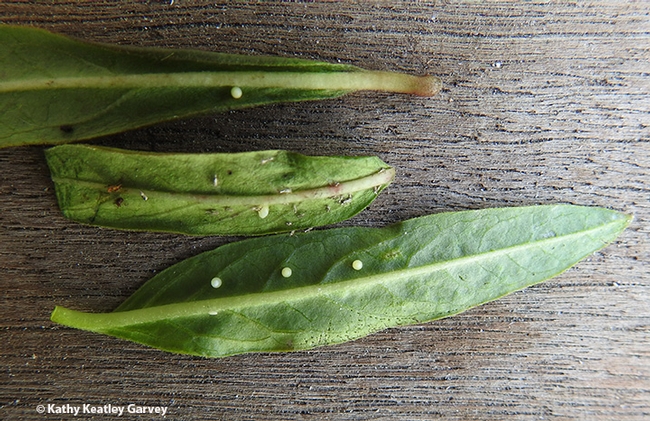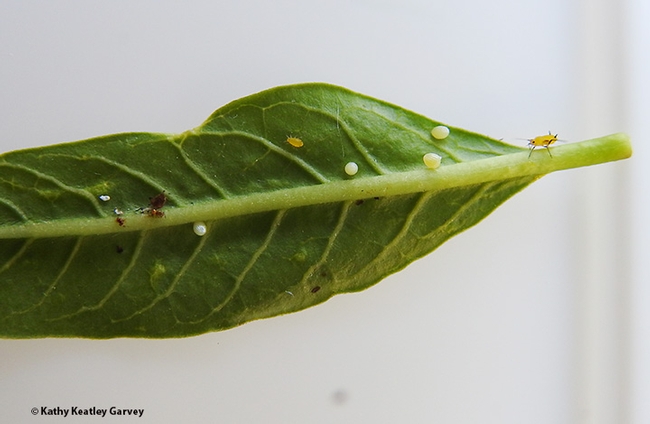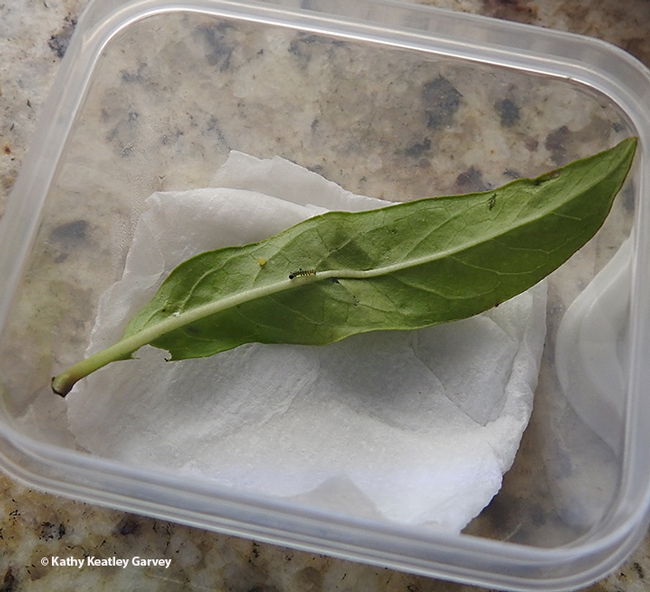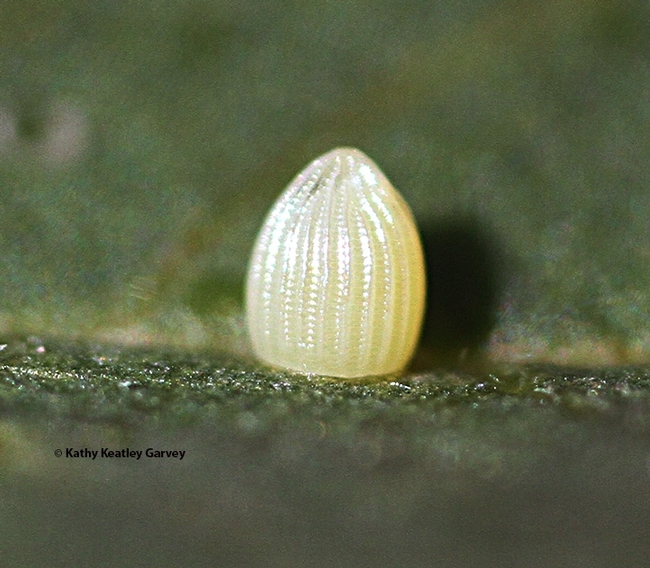
Monarchs lay their eggs on the underside of milkweed leaves--generally--but we've seen them on stems and on the leaf edges. They usually deposit a single egg beneath the leaf, but we've spotted as many as four on one leaf. They secrete a glue so the egg will adhere.
Color? They're a creamy yellow with narrow longitudinal ridges from the top to the bottom. Size? About 0.9 to 1.2 mm long, or about the size of a pinhead.
They hatch about 3 to 4 days after they're laid. Then you'll see the black-headed tiny larva or caterpillar eating its shell before it begins devouring the leaf.
Some folks confuse the sap-sucking yellow oleander aphids with the monarch eggs. Or the yellow eggs of the lady beetle, aka ladybug. So we took a few images of them.
In our family pollinator garden in Vacaville, we've collected about 250 monarch eggs or caterpillars this year, and the mamas are still laying eggs! The predators and parasitoids also like immature monarchs. Predators include lady beetles (ladybugs), spiders, milkweed bugs, lacewings, and wasps. Tachinid flies and other parasitoids lay their eggs in or on the immature monarchs or deposit their eggs on a leaf that the caterpillar eats. The fly larvae develop inside the living host, killing it. Note: tachinid flies are considered beneficial insects when they lay their eggs in such pests as cabbageworms.
We grow five species of milkweed:
- Tropical: Asclepias curassavica
- Narrowleaf: Asclepias fascicularis
- Showy: Asclepias speciosa
- Butterfly weed: Asclepias tuberosa
- Swamp milkweed: Asclepias incarnata
But back to the question: how can you tell the difference between an oleander aphid and a monarch egg? They are so tiny and both are yellow! Basically, the aphid has legs and it moves! Some aphids are winged and fly. Another clue: aphids cluster together; you won't find monarch eggs in a cluster.
Note that the lady beetle lays her eggs in clusters, so if you find a cluster of eggs, those aren't monarch eggs.
Happy hunting!
Attached Images:

Monarch eggs are usually one to a leaf, but sometimes Mama Monarch deposits multiple eggs on a single leaf. (Photo by Kathy Keatley Garvey)

Find the oleander aphids! Monarch eggs and oleander aphids both occupying a leaf. (Photo by Kathy Keatley Garvey)

An egg and a newly emerged caterpillar sharing a leaf. (Photo by Kathy Keatley Garvey)

Close-up of a monarch egg. This image was taken with a Canon MPE-65mm lens. (Photo by Kathy Keatley Garvey)